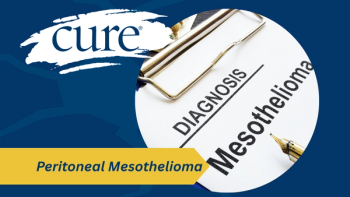
Improvements in Radiation Therapy May Confer Better Treatment for Lung Cancer
Increased use of radiation in lung cancer treatment may be a result of discoveries in research and improved spreading of information on this technology.
Advances in radiation for the treatment of patients with lung cancer has progressed the field over the past decade, and research is already underway to help more patients benefit from the technology.
Dr. Terence M. Williams, professor and chair in the department of radiation oncology at City of Hope National Medical Center in Duarte, California, presented information at the CURE®Educated Patient® Lung Cancer Summit about the increased use of radiation in patients with lung cancer, the different technologies available for a wide range of disease states and where the area may head in the next few years because of clinical trials. After the presentation, CURE® spoke with Williams to learn more about why this area is so important for patients.
CURE®: Why do you think it's important for patients with lung cancer to learn about advances in radiation?
Williams: I think it's important for patients to learn about advances in radiation because it could lead to better treatment for them. It could lead to shorter courses of radiation for them as one example, or for treatment in patients with small amount of metastatic disease. Our field is ripe with technology, and we now have even more improved ways to image the tumors and better target the radiation beams to those tumors. And in certain indications, it definitely helps to have more advanced radiation equipment to deliver the radiation.
Are there certain stages or cancer subtypes that are better suited for radiation compared with others?
No, I think radiation has roles in all stages of lung cancers. And there is much research being done on the molecular subtypes of lung cancer in order to identify which subtypes might be a little bit more sensitive or resistant to radiation. But at this point, we feel that radiation can potentially benefit virtually every stage of lung cancer and its worthwhile for a patient to meet with his or her oncologist to discuss the option of radiation for the treatment of his or her particular situation.
In your presentation, you mentioned how the use of radiation in lung cancer was really limited in the 70s and 80s, and now it's increasing. Can you go into why the use of it is becoming more widespread?
There's a lot more dissemination about the role of radiation in lung cancer in the media, through patient advocates and social media, for example. Patients come into the clinics, and into the hospital, now much more aware about the treatment options they have and the choices that they can make with regards to their own care. And the advances in radiation have promoted the field of radiation to find new avenues and benefits for patients.
Are there any side effects that are associated with radiation therapy?
The side effects of radiation largely depend on where the beams are targeted. And so, examples of some radiation toxicity that can happen for treatment of lung cancer include skin irritation, cough, shortness of breath, sore throat, trouble swallowing, weight loss, fatigue, a syndrome we call radiation pneumonitis and, in the long run, damage to the heart, which can lead to heart problems down the road. Chest injury and rib fracture from high doses of radiation is another potential set of side effects that's usually from a technique we call SBRT (stereotactic body radiation therapy).
In your presentation, you also discuss chemoradioimmunotherapy. Can you go into more detail on this?
The field of radiation and treatment for stage 3 (lung cancer) was improved upon by the addition of immunotherapy, based on the
Despite all of the progress that we made so far in radiation, especially in the past decade or so, do you think there are any unmet needs that need to be addressed?
In the setting of stage 1 non-small cell lung cancer, is high-dose radiation therapy (SBRT) equivalent to surgery for operable patients? In the setting of after surgery for patients with Stage 2 or 3 lung cancer, recent data (have) suggested that radiation has less of a role in what we call the post-operative setting, although there are some studies to suggest that maybe radiation might be beneficial for residual disease or for cases at high risk of recurrence in the chest. So the role of radiation needs to be maybe further clarified in that setting.
And then I think the timing or radiation in relation to immunotherapy may be important. In the stage 3 setting, where exactly is the best timepoint in which to give the immunotherapy? We know that after (chemo/radiation) has a benefit, but is it more beneficial to move immunotherapy upfront, such as before or during chemo/radiation? And along those same lines, what about moving immunotherapy into earlier stages of treatment, such as stage 1 patients receiving SBRT? It’s a similar question that's outstanding. In another type of lung cancer called small cell lung cancer (more rare than non-small cell lung cancer), we are still defining the role of immunotherapy in combination with chemo/radiation so more to come on that.
For more news on cancer updates, research and education, don’t forget to





